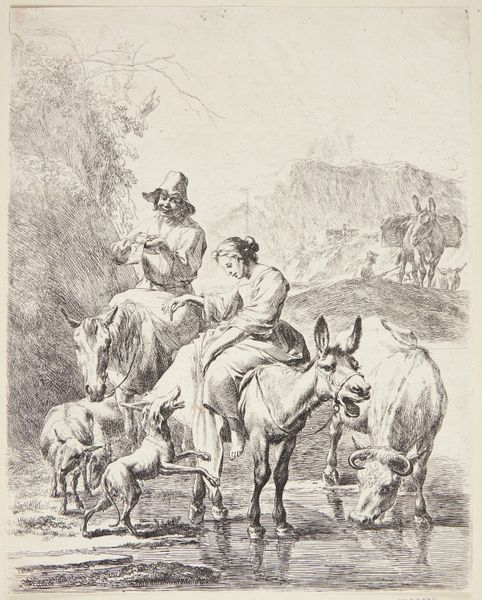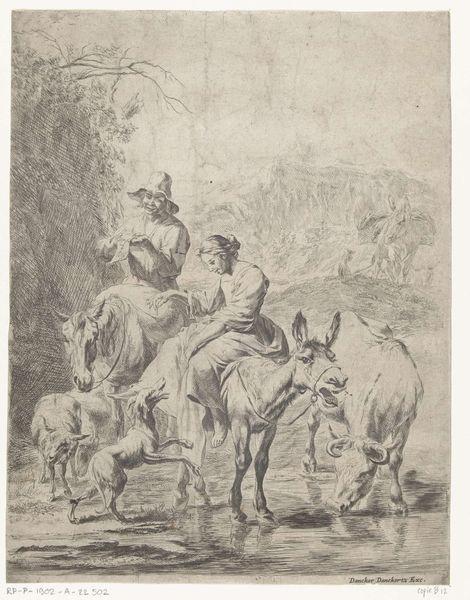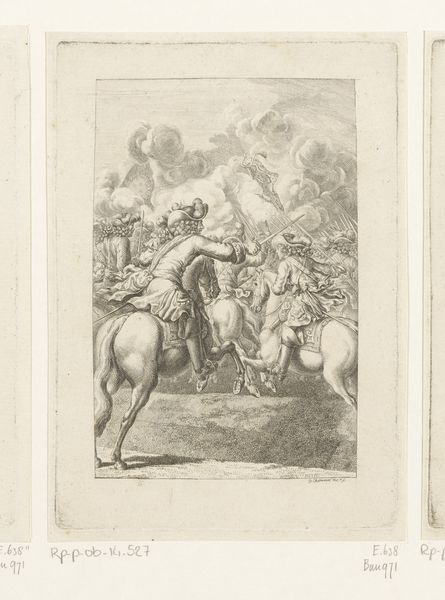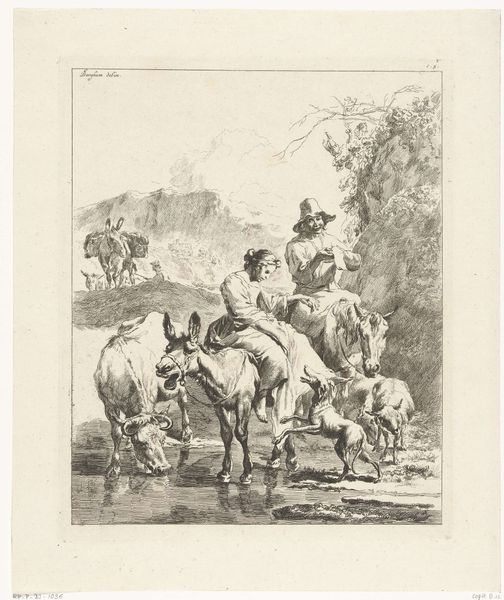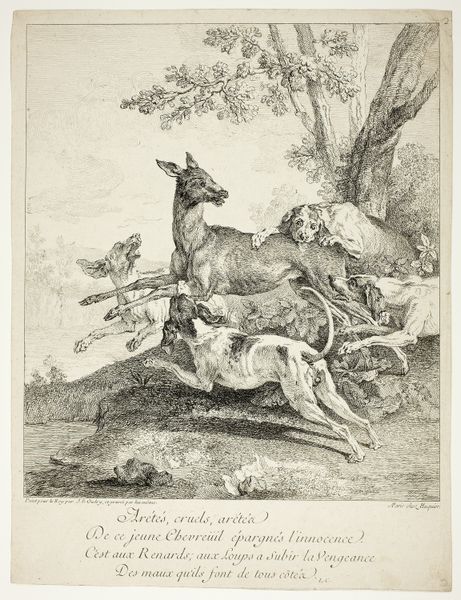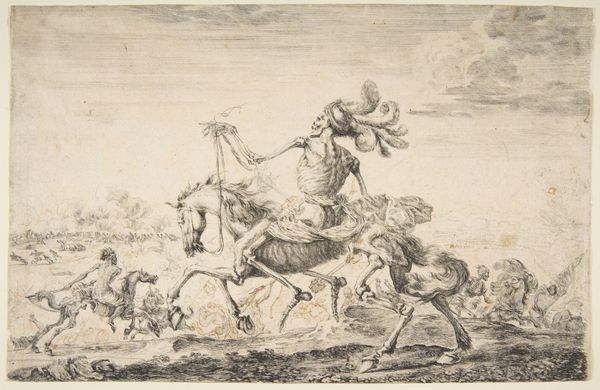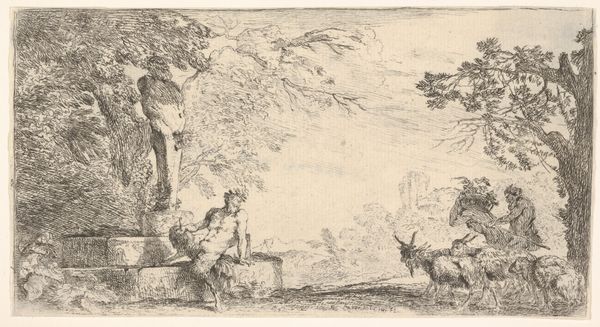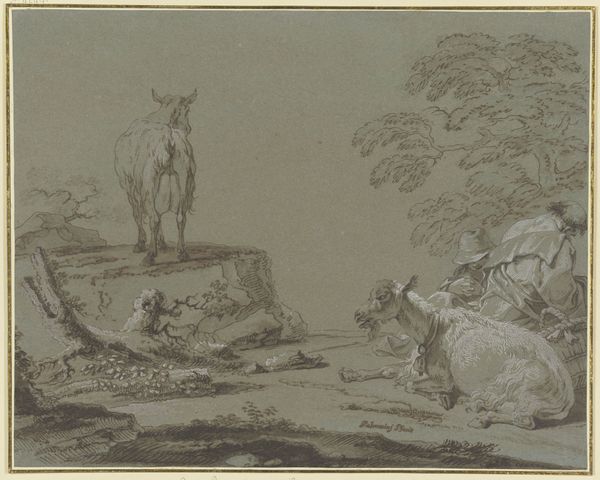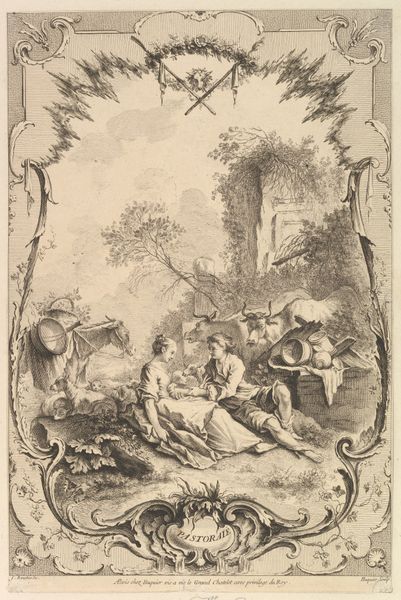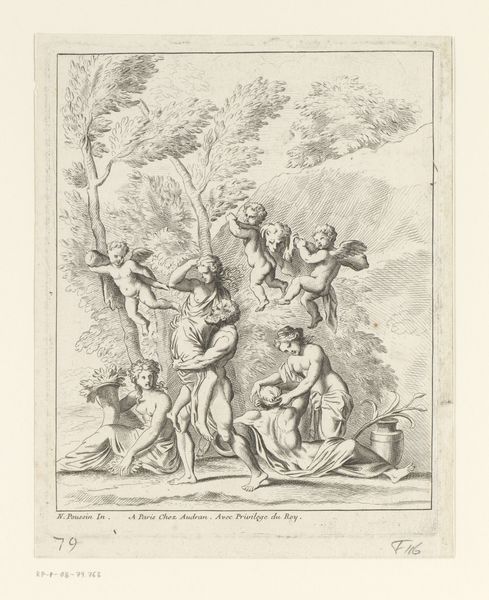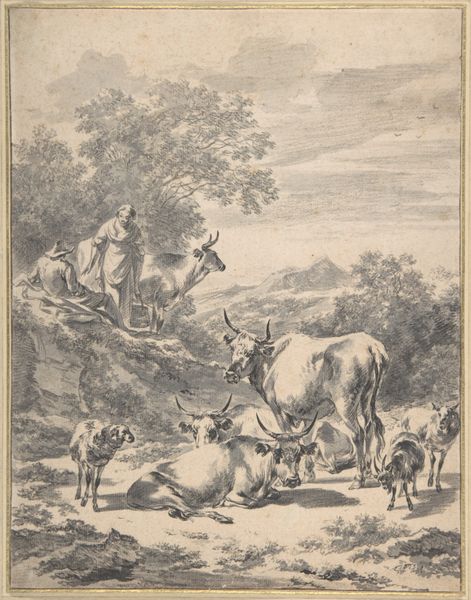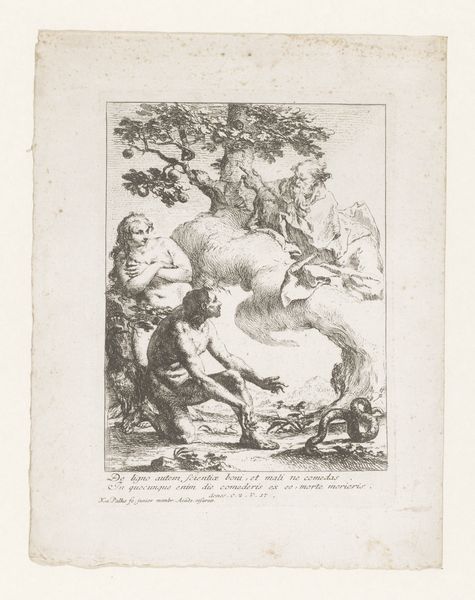
print, etching
#
pencil drawn
#
toned paper
#
light pencil work
# print
#
etching
#
pencil sketch
#
charcoal drawing
#
charcoal art
#
pencil drawing
#
watercolour illustration
#
pencil art
#
watercolor
Dimensions: 261 mm (height) x 204 mm (width) (plademaal)
Curator: This etching is titled "Hyrdinde paa et Aesel", or "Shepherdess on a Donkey", created by Nicolaes Berchem sometime between 1620 and 1683. Editor: It's a serene pastoral scene. The delicate etching work gives it an almost dreamlike quality. Curator: Berchem was known for his Italianate landscapes. This work beautifully demonstrates his mastery of etching techniques, look at the economy of line! Notice how he uses varied line weights to suggest depth and shadow, quite extraordinary considering the material limitations of printmaking. Editor: And the subject matter itself. We have the shepherdess as you pointed out but she is only one part of a tableau including an old man riding a cow, and an unrestrained dog. The figures seem at ease with their animals in this rural space, presenting an image of idealized country life. I wonder what socioeconomic status the artist is idealizing, given how rural labour and hierarchy functioned? Curator: It does provoke questions, doesn’t it? The toned paper enhances the contrasts in the print, drawing our eye to the activity happening around the pool of water. Editor: Exactly. Considering the period in which it was made, during the Dutch Golden Age, with its intense mercantile activity, this print can be seen as a visual argument in favour of simpler pastoral existence; what kind of access to resources did Berchem have that he would want to project that message? Curator: Perhaps, but this focus on craft raises an important point; printmaking itself served a growing market, a capitalist system developing alongside the growth of cities. It shows that even artistic representation of supposedly “simple” lives is itself commodified and distributed. Editor: Yes. The detail put in this work demonstrates it was destined for distribution for sure, and perhaps even more importantly to promote specific ideals, in tension with other more urban representations. The interplay between gender, nature and labor cannot be dismissed when appreciating the sheer artistic value, something this print achieves admirably. Curator: A remarkable combination of skill, materiality, and socioeconomic messaging. Editor: It does leave me pondering on those themes and how they were marketed back then.
Comments
No comments
Be the first to comment and join the conversation on the ultimate creative platform.
